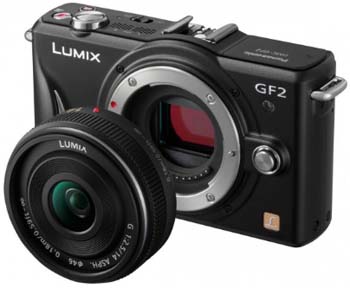 In 2008, the first mirrorless digital cameras were introduced to the market as an option to DSLR’s and compact cameras. Today, they’re an excellent option for divers interested in taking great underwater photos – and not just amateurs! The quality of the latest mirrorless cameras is outstanding and rival what was possible just a few years back with a full size underwater DSLR setup.
In 2008, the first mirrorless digital cameras were introduced to the market as an option to DSLR’s and compact cameras. Today, they’re an excellent option for divers interested in taking great underwater photos – and not just amateurs! The quality of the latest mirrorless cameras is outstanding and rival what was possible just a few years back with a full size underwater DSLR setup.
Starting with the basics: What is a mirrorless camera?
Before we get into details, let’s start by defining what a mirrorless camera is, and why it’s really mirrorless.
A mirrorless camera is essentially a combination of a DSLR camera and compact camera. In short, it’s like a digital SLR, only without the mirror(s) which move out of the way at the moment of exposure to expose the image sensor (formerly film) to incoming light. Mirrorless cameras are smaller and lighter than a normal DSLR camera yet share many features with a DSLR while having controls and operation more like a compact camera.
As an improvement over small compact cameras, mirrorless cameras’ larger image sensors provide a higher quality image and better overall performance than is possible in a compact camera. When you put your eye up to the viewfinder of a digital SLR camera, you see exactly what the lens sees, because you’re actually seeing through it. An arrangement of mirrors inside the camera reflect the image passing through the lens and bounce it up to the viewfinder. One benefit of this mirrored system is speed: when zooming the lens, and you instantly see the image change in the viewfinder. Out-of-focus subjects immediately become clear when the autofocus engages.
The tradeoff or drawback of a system with mirrors is that they significantly increase the size and weight of the camera. If you compare the smallest digital SLR camera made today and a large compact, the difference in size is substantial. The compact will fit into a large pocket – unless you have extremely baggy cargo pants on, you’re not going to do that with a full-size DSLR (not to mention the “is that a camera in your pocket” jokes…)!
Manufacturers sought a way to create a camera with the superior image quality of a digital SLR and the small form factor of a compact camera, and their engineers came out with a simple solution: leave the camera internals, but take out the mirrors. By eliminating the cluster of mirrors, manufacturers are able to dramatically reduce the size of their cameras, especially the depth. With the mirrors are gone – either permanently or replaced with electronic alternates – the rest of the features of a DSLR are still there: speedy performance, fast autofocus, manual controls and the ability to change lenses.
The first mirrorless cameras (also known as Compact System Cameras) first appeared on the market in 2008 with the Olympus and Panasonic Micro Four Thirds system. These first generation cameras from these manufacturers in two distinct body styles – a rangefinder-inspired aesthetic and the mini-DSLR look. Of the two, rangefinder-style bodies are generally smaller in size, which has been accomplished by omitting a built-in electronic viewfinder, instead depending on the rear screen for image composition, much like current compact cameras.
Since the Micro Four Thirds launch, most of the major manufacturers have released their own versions of mirrorless cameras. These include Samsung’s NX, Sony’s NEX, Fujifilm’s X and Canon’s EF-M mounts (based around APS-C sensors), Nikon’s smaller-sensor 1 System, and Pentax’s Q, which uses sensors usually seen in compact cameras. Each has a range of different features and benefits.
Going mirrorless – less is sometimes more
It’s important to understand how much mirror less cameras actually have in common with DSLRs. In most cases, their image sensors are the same or similar in size to most popular DSLRs, and by comparison, most compact cameras have sensors that are one twelfth of that size. This is a significant factor, since sensor size has one of the largest effects on image quality (even more relevant than the number of megapixels). As a result, the image quality of many Mirrorless models is identical or very similar to that of full-size DSLRs. In addition to low-light image quality, these larger image sensors result in systems with greater control over depth-of-field, meaning that you can think about using large aperture lenses to get photos with soft, defocused backgrounds (sometimes referred to as bokeh).
To find out which mirrorless cameras are the absolute best for underwater photography, we consulted with our go-to camera expert Brent Durand of the Underwater Photography Guide and the team at Blue Water Photo Store for their expert advice. Both Brent, Scott Geitler (who is also the owner of Blue Water Photo), and the rest of their team are underwater photography pros (with outstanding portfolios too, I might add!), and have the experience in underwater photography and product knowledge to help me and others make the best decision on choosing a mirrorless camera system. They’re my go-to team for finding the best information – and as a plus, they’re expert underwater photographers above all else. Please click here to learn a lot more on mirrorless cameras from Brent Durand from his article “Best mirrorless cameras for underwater photography 2014“. Enjoy! .

